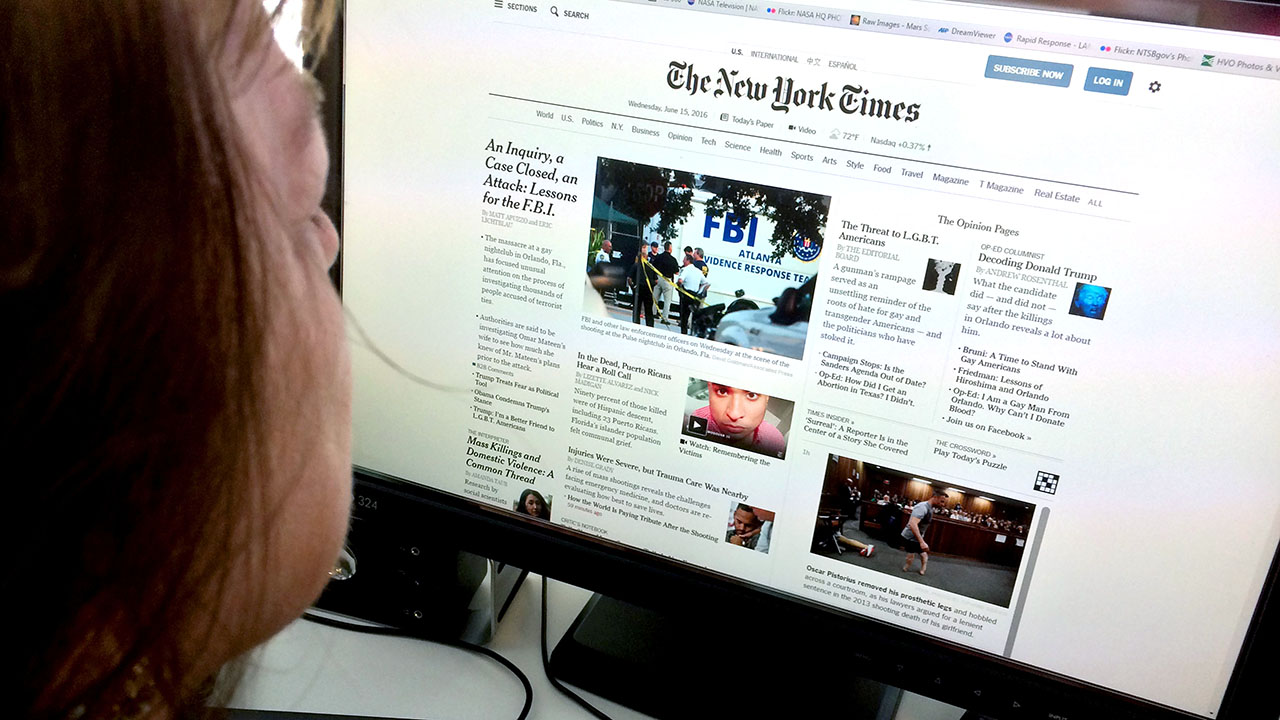The Of News Channels
The Of News Channels
Blog Article
All about News Channels
Table of ContentsAbout News ChannelsAll about News ChannelsRumored Buzz on News ChannelsWhat Does News Channels Mean?
The premier programs will commonly air in the evening during "prime-time television", however there are also early morning broadcasts of 2 to three hours in size. Rolling information networks broadcast information content 24-hour a day. The development of the web has enabled the regular 24-hour-a-day discussion of lots of video and audio report, which are updated when added info comes to be available; several television broadcasters provide material initially offered on-air along with exclusive or additional news web content on their internet sites.Stations that use a "wheel" style often tend to maintain to an established schedule of specific shows at particular specific minutes on the hour, and among these sectors is frequently a news flash. These brief publications will certainly provide overviews of any kind of breaking news of rate of interest, and might include local worries such as climate forecasts or web traffic reports.

News broadcasts in the USA were initially transmitted over the radio. NBC began programs in November 1926, with CBS getting in production on September 25, 1927. Both originally reviewed comparable subjects, such as political election outcomes, presidential commencements, and various other issues of issue to the general public. NBC soon arised as the dominant pressure for amusement ability.
The Single Strategy To Use For News Channels
A general change gradually occurred in the design of the evening newscasts in most countries. In the 1950s, television was unique enough that it was considered amusement. In the 1960s and 70s, television broadcasts had a tendency to be uncommonly "serious" by later standards, including more "difficult news" and less light amusement blended in.

From 2000 to 2010, total viewership of tv program information continued to decline. Some news-adjacent cord programs acquired fame and success in this era (such as the click for source comedy-focused and the commentary-focused ). Their gains did not balance out the continuing high decline in viewership of mainline network news. This era saw diversity and fragmentation continue also further as new particular niche networks gained importance such as the business-focused CNBC, Bloomberg Tv, and Fox Business.
The 10-Minute Rule for News Channels
broadcasts on other terminals. The National, which has actually aired on CBC Television since 1954, is the longest-running national network newscast in copyright. All 3 networks also generate weekly newsmagazines: CBC's (broadcast given that 1975), Global's (aired considering that 2008), and CTV's (broadcast given that 1966 and currently the longest-running network newsmagazine in copyright). [] CTV's is the sole national morning information program on program television in copyright, and changed, which aired since 1975.
Regional TV terminals in the United States generally transmitted local information 3 to four times a day on standard: generally airing at 4:30, 5:00, 5:30, or 6:00 a.m.; noon; 5:00 and 6:00 p.m. in the early evening; and 10:00 or 11:00 p.m. Terminals that produce neighborhood newscasts commonly relay as little as one to as much over twelve hours of regional news on weekdays and as little as one hour to as much as 7 hours on weekend breaks; information programming on weekend breaks are generally limited to early morning and evening broadcasts as the variable scheduling of network sporting activities programs (if a station is associated with a network with a sporting activities division) usually protects against most stations from lugging midday newscasts (however a couple of stations found in the Eastern and Pacific time areas do create weekend noontime broadcasts). From the 1940s to the 1960s, broadcast television stations usually given regional news programs just one to two times each night for 15 mins (the normal length for several locally created programs at the time); generally these programs aired as supplements to network-supplied night news programs or leadouts for primetime programs.
The Definitive Guide to News Channels
In cases where a terminal with an existing news read this post here department gets in right into an information share contract, it will certainly this post result either the 2 departments merging or the straight-out conversion of broadcast manufacturing from in-house to outsourced manufacturing.
These names are planned to establish one station besides the rest, especially for viewers who are chosen for target market measurement surveys. If the respondent was incapable to provide a network number or call letters, the broadcast title is usually sufficient for the ideal terminal to receive Nielsen ratings debt. [] The Big Three broadcast tv networks create early morning and evening nationwide broadcasts.
Report this page